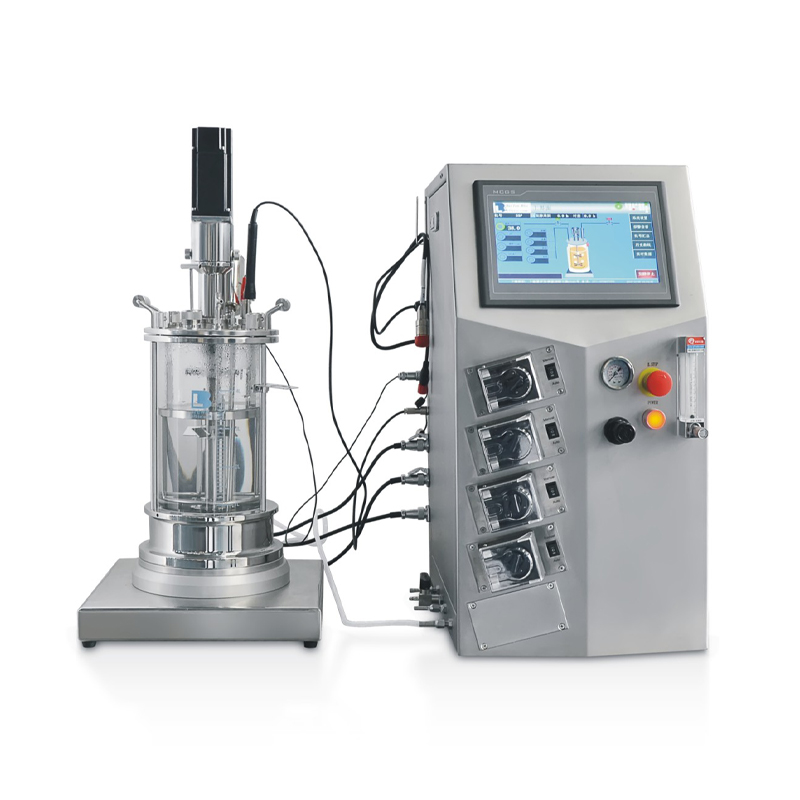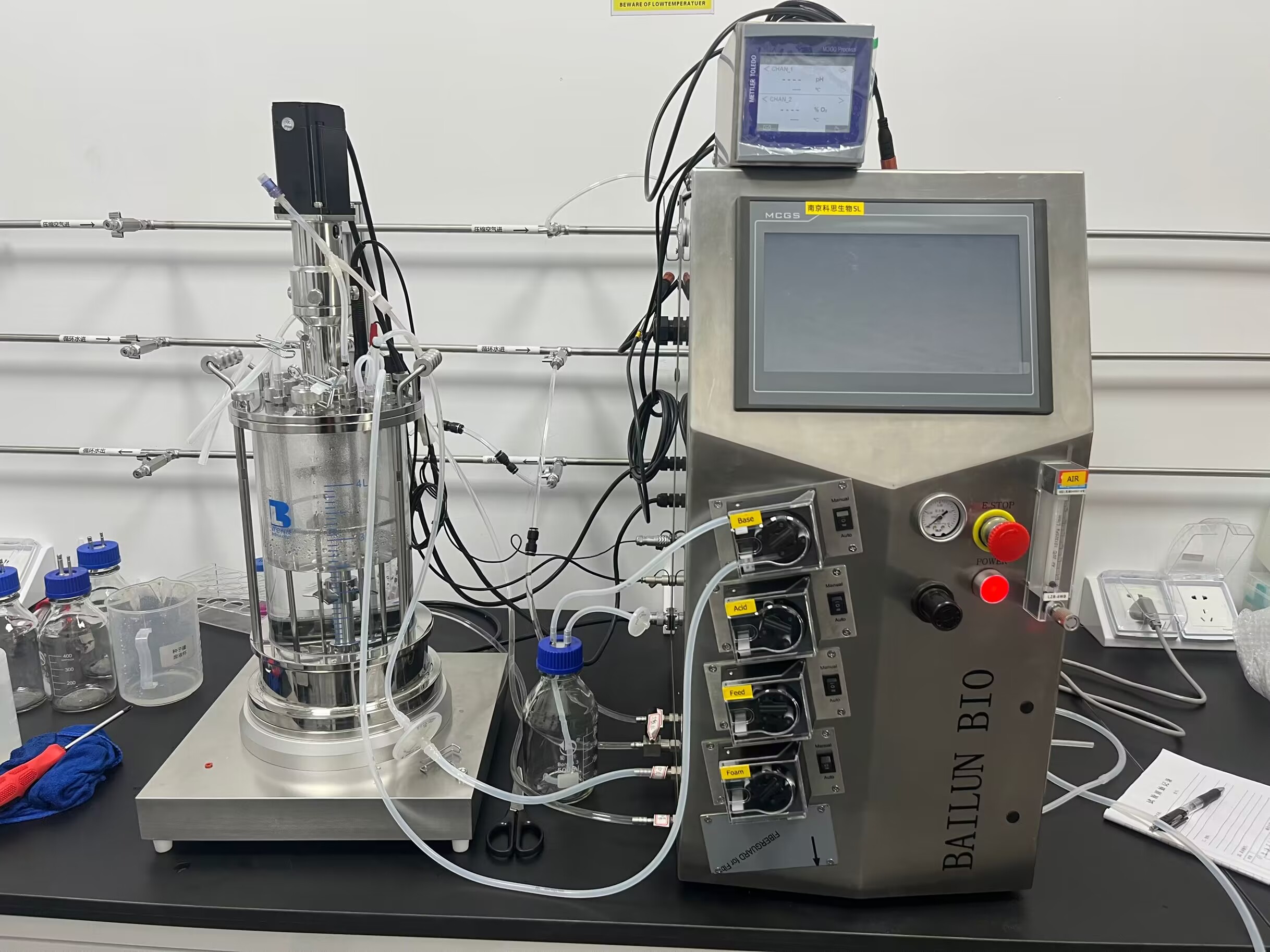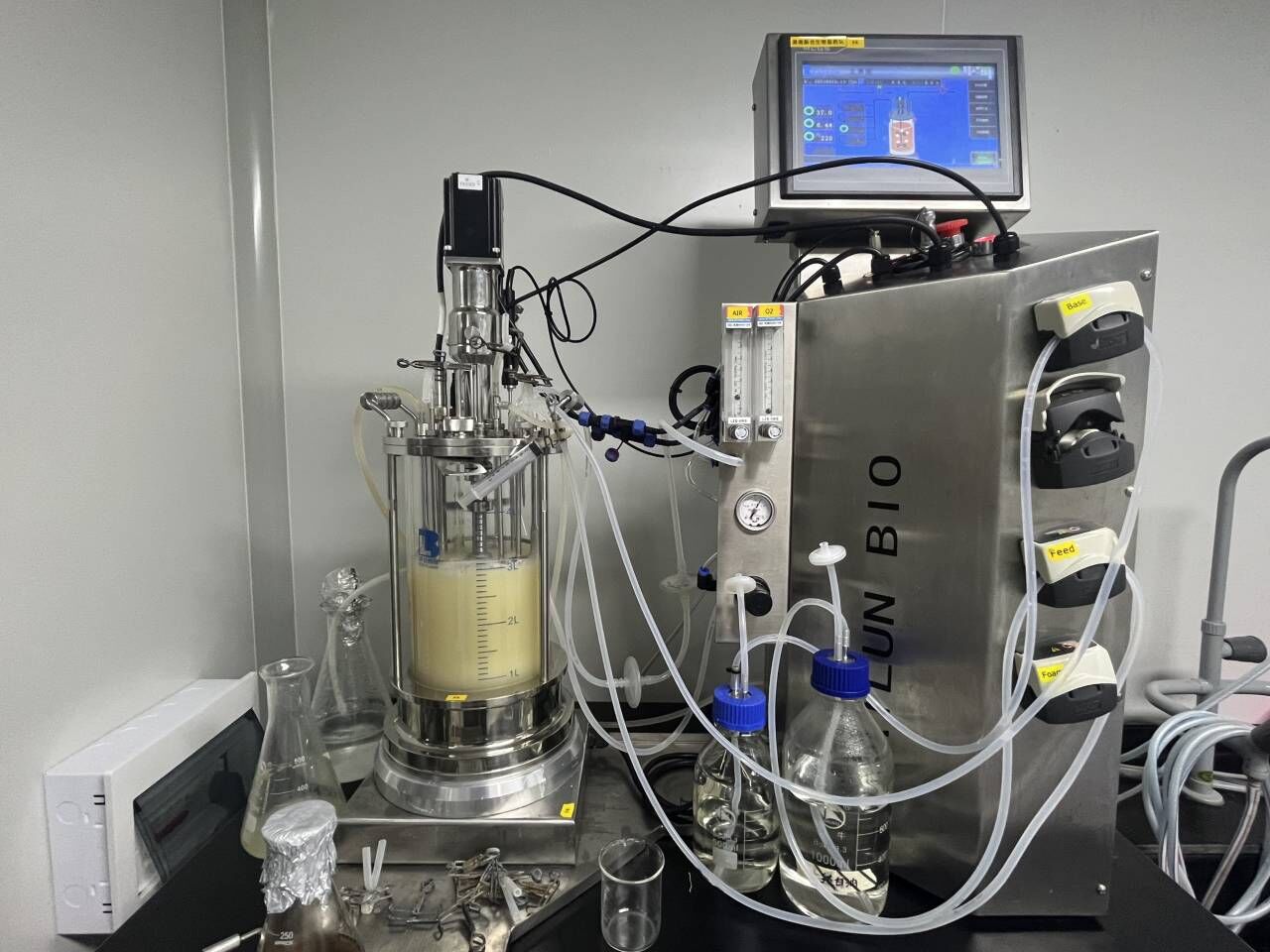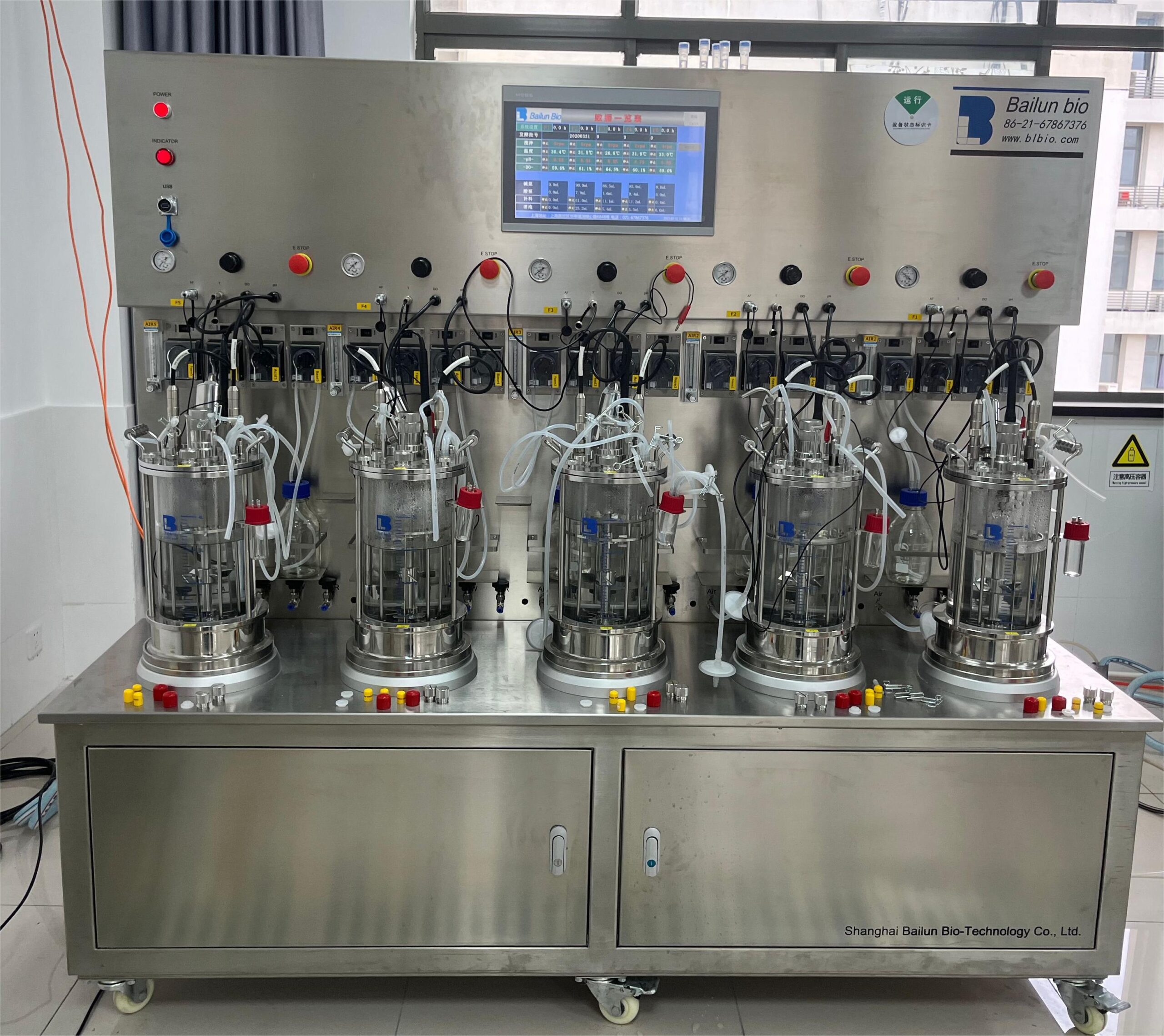Are you in need of a Mechanical Stirring Glass Fermenter that is easy to use, highly versatile and efficient for your lab or industrial use? The Fermentor series is the new generation of fermentors from China which has an elegantly designed structure, outstanding features at a competitive price for BLBIO-5GJ.
But what sets this fermenter apart from the others? Why is it the first source when it comes to bacterial, fungal, yeast, mammalian and plant cell cultures in professional interactions?
It would be pertinent to dig deeper into all the crucial information regarding the Mechanical Stirring Glass Fermenter that is now taking the world of research and production by storm!
What is the BLBIO-5GJ Mechanical Stirring Glass Fermenter?
The Mechanical Stirring Glass Fermenter is a type of laboratory bioreactor that is ideal for the researchers and other professionals who are in need of highly accurate, versatile and reliable fermenters for their laboratory experiments. Made entirely of a single glass with a strong fixed base of stainless steel 316L and a stainless steel 316L lid, this fermenter is a perfect synergy of strength and visibility of the fermentation process.
The BLBIO-5GJ is designed to offer a working volume of 50-70% of the total tank size (5L in this case) and can perform batch, feed batch, and even delicate mammalian cell culture processes.
Are you working on creating vaccines that can be effective for saving people’s lives, enzymes that give higher yields for industries and businesses, or brand new biotechnologies? Well, then the BLBIO-5GJ is the exact tool that you require to have at your disposal!
Unrivaled Features of the 5L Mechanical Stirring Glass Fermenter
The 5L mechanical stirring glass fermenter boasts unique features that makes it stand out from the numerous other fermenters in the market as explained below:
1. Intelligent Touch Screen Control
The BLBIO-5GJ is equipped with a 10-inch color touch screen display with an optional upgrade of the 15-inch touch screen display.
Easy to navigate app with instant monitor and adjustable parameters means that users will be able to track or regulate:
- Stirring speed
- pH levels
- DO (Dissolved Oxygen) levels
- Temperature
- Feeding rate
- Gas control
- Alarm settings
Have you ever felt that the current control panels in your company are too complicated? When it comes to fermentation management, the BLBIO-5GJ offers nothing but ease, speed and efficiency.
2. Mechanical Stirring System
In the Mechanical Stirring Glass Fermenter, there is a direct-coupled mechanical drive which is of GJ type. Having the stirring rate of 50-1000 RPM, the fermenter provides the necessary shear force maintaining intact fragile cells at the same time. It uses:
- 3 six-blade paddles (adjustable height)
- 1 foam breaker to allow easy stirring so that there is no excessive foaming.
It does not matter if you are going to use mild movement to suspend mammalian cells or vigorous shaking to promote bacterial culture, this fermenter has got you covered!
3. World-Class Sensors
As for precision, Fermentor China does not leave anything to chance:
- pH Control: Automatic acid/base addition via peristaltic pumps; accuracy ±0.1; sensors by Hamilton/Mettler (Switzerland).
- DO Control: Oxygen at 0–150% ±3%; automatic blending of the gases; usage of Hamilton/Mettler DO sensors for its reliability.
- Temperature Control: Automated with electric heating range from ambient +5°C to 70°C.
Worried about contamination? Thus, sterilization of the fermenter can be done off-site so that when it is returned into the lab it does not contaminate the lab and equipment that are used in other experiments or operations.
4. Flexible Gas and Feeding Systems
The rate of flow of the carrier gases, namely hydrogen and helium (1-2 vvm as read by rotameter) and feeding system of the precursors (Automatic through peristaltic pump) are made quite flexible. And, there are also anti-foam control mechanisms to ensure that the fermentation process proceeds as planned and without interference.
5. Expandable and Customizable
Need advanced functionalities? Customize your fermenter with:
- Remote control options
- Mass flow meters for automatic gas management
- Sensors for ORP, turbidity (OD), biomass (live cell)
- The extraction of gas analysis of the exhaust of the car, particularly for carbon dioxide and oxygen.
- Level sensors
- Printing capabilities
Why should you lower the standards of your fermentation platform when you can have a future-proof one?
Applications of the BLBIO-5GJ Mechanical Stirring Glass Fermenter
The features of the Mechanical Stirring Glass Fermenter has made it ideal for various companies and research disciplines:
1. Vaccine Production
- Avian Influenza Vaccine
- Porcine PRRS Vaccine
- Rabies Vaccine
- Mink Vaccine
- DTP (Diphtheria, Tetanus, Pertussis) Vaccine
- Hepatitis B Vaccine
2. Microbial Fermentation
- Bacteria
- Fungi
- Yeast
3. Cell Culture
- Mammalian Cells (CHO, 293 cells)
- Plant Cells
- Algae Culture
4. Biotech Products
- Enzymes
- Proteins
- Antibiotics
- Additives
It is rather fascinating that in general such a small system is capable of promoting so many scientific advancements.
Technical Specifications at a Glance
| Parameter | Description |
| Total Volume | 5L (optional volumes: 0.2L to 40L) |
| Working Volume | 50%–70% |
| Vessel Type | Single glass with stainless steel bottom |
| Lid Material | Stainless Steel 316L |
| Stirring Speed | 50–1000 RPM |
| Sterilization | Off-site (Autoclave) |
| Gas Control | Rotor meter, 1-2vvm |
| Temperature Control | Electric heating (Ambient +5°C to 70°C) |
| pH Control | 2.00–12.00 ±0.1 (Auto control) |
| DO Control | 0–150 ±3% |
| Sampling | Manual |
| Control System | Siemens PLC, Touchscreen |
| Sensors | Hamilton/Mettler (pH, DO) |
| Feeding and Anti-foam | Peristaltic pumps |
Why Choose the Mechanical Stirring Glass Fermenter (BLBIO-5GJ)?
- As far as every detail of the project is concerned, you have full control over each decisive factor.
- Say goodbye to bulky setups. All that you need is incorporated in a neat, ultracompact and easy to use gadget.
- The equipment is made from corrosion resistance glass and stainless steel 316L hence ensuring a long life and better sterilization.
- To this end, it is important to consider that Hamilton/Mettler sensors are Swiss made, so they provide laboratory accuracy to your equipment.
- We know that your laboratory requirements are dynamic and therefore the BLBIO-5GJ design is not an exception. Include remote monitoring, biomass sensors, mass flow gas control, and so on.
- First-time user? No problem. The design of the device with the help of an easy to use intuitive touchscreen and other features such as automated feeding and alarms make the operation of the device very easy.
Who Should Use the Mechanical Stirring Glass Fermenter?
- Research Institutes
- Biotechnology Companies
- Pharmaceutical Manufacturers
- Academic Laboratories
- Vaccine Research Centers
- Microbial Culture Facilities
Are you ready to take your research from where any common man can do to the next level?
Final Thoughts
The Mechanical Stirring Glass Fermenter BLBIO-5GJ is designed to provide you with the best of that desire. No matter if you are introducing novel vaccines, studying the subtleties of mammalian cell culture, or optimizing microbial fermentation, this fermenter provides the features and versatility you require.
What could be more perfect for upping your fermenting skills than this quiz?
If you are interested in any of our products, please feel free to contact Fermentor China and we will provide the most suitable quote for you to open up the new world of science.
Frequently Asked Questions (FAQ’s)
Q1: What’s the difference between Mechanical Stirring Glass Fermenter and Magnetic Stirring Models?
A1: Mechanical stirring utilizes a directly connected shaft for the purpose of mixing, which results in a better mixing of the dense cultures. Magnetic stirrers are particularly suitable for cultures that need to be stirred gently.
Q2: What is the maximum temperature that you can bring for washing?
A2: The electric heating can heat from +5°C from the surroundings to 70 °C.
Q3: Is sterilization easy?
A3: Absolutely! The geometry of the glass vessel ensures that it can be autoclaved off-site; therefore, the autoclaving process is not complicated and can be easily done.




